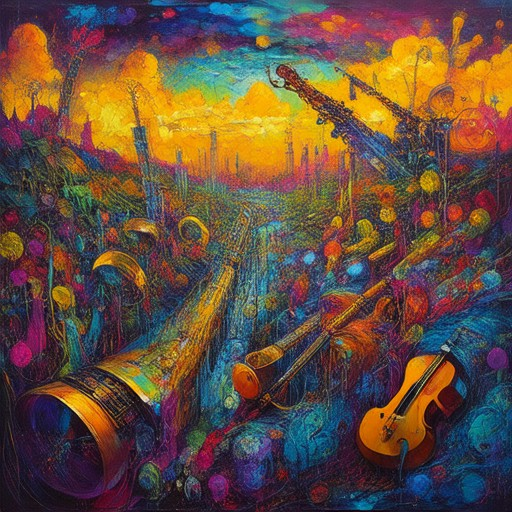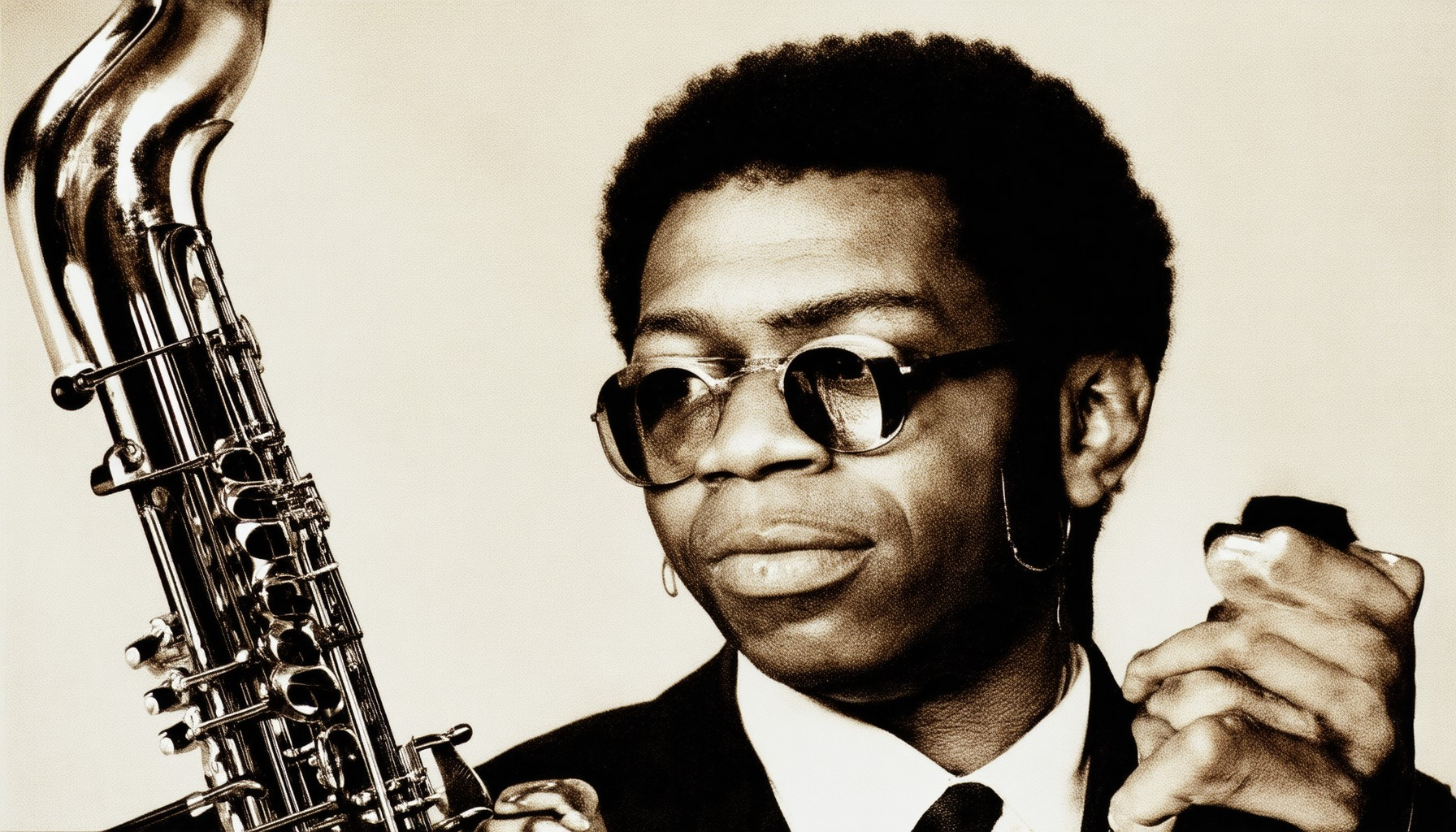Jazz fusion, a captivating blend of styles that redefined modern music, emerges from a rich tapestry of cultural influences and artistic innovation. This unique genre, often referred to as fusion music, traces its roots back to the mid-20th century, where musicians began experimenting with combining elements of jazz, rock, funk, and even classical music. At its core, jazz fusion represents a bold exploration of boundaries, challenging traditional norms while embracing new sounds and techniques.

Origin of Jazz Fusion
Jazz fusion originated in the United States, primarily in the cities of New York and Los Angeles during the 1960s and 1970s. The genre emerged from the blending of jazz with various other musical styles, including rock, funk, Latin music, and classical elements. This creative evolution was driven by innovative musicians like Miles Davis, John Coltrane, and Herbie Hancock, who pushed boundaries by merging traditional jazz with contemporary sounds.
The term “jazz fusion” itself was popularized during this period, reflecting the genre’s departure from conventional jazz structures. Studios in Los Angeles became central hubs for recording these experimental works, fostering a vibrant community of musicians exploring fresh auditory territories.
Beyond the U.S., jazz fusion found a strong following in Europe, particularly in countries like France and Germany. Local artists drew inspiration from both American jazz and their own musical traditions, giving rise to distinct European jazz fusion styles that incorporated elements of progressive rock and avant-garde techniques.
Thus, jazz fusion began in the U.S. but evolved globally, becoming a diverse and dynamic genre shaped by cultural exchanges and artistic innovation.
Where Did Jazz Music Originate?
Jazz music originated in the United States, specifically in the African-American communities of New Orleans, Louisiana, during the late 19th century. This unique style emerged from a mix of African rhythms, blues, and spirituals, combined with European musical elements like brass instruments and ragtime. The cultural melting pot of New Orleans provided the perfect environment for this fusion to take root.
The early years of jazz were marked by improvisation and collective ensemble performances, often featuring artists like Buddy Bolden and Jelly Roll Morton. As jazz evolved, it spread northward to cities like Chicago and New York, where it further developed into various subgenres such as big band, bebop, and cool jazz. Key figures like Louis Armstrong and Duke Ellington played significant roles in popularizing jazz globally.
Thus, while New Orleans is widely regarded as the birthplace of jazz, its influence extended far beyond, shaping the musical landscape of the 20th century and beyond.

What is the Fusion Era of Jazz?
The Fusion Era of jazz emerged in the late 1960s and early 1970s, marking a transformative period in the genre. This era saw jazz musicians blend traditional jazz elements with influences from funk, rock, and even classical music, creating a bold and experimental sound.
- Origins : The Fusion Era began in the late 1960s, with artists like Miles Davis leading the charge. Davis’ album A Tribute to Jack Johnson (1971) is often cited as a foundational work, combining jazz with funk and rock influences. This shift away from conventional jazz structures allowed for greater improvisation and exploration of new sonic territories.
- Key Artists : Several iconic figures emerged during this era:
- John McLaughlin and his band the Mahavishnu Orchestra pushed boundaries with their progressive rock-infused jazz.
- Herbie Hancock revolutionized jazz fusion with his groundbreaking album Maiden Voyage (1970), blending funk, bebop, and modal improvisation.
- Wayne Shorter contributed with his innovative compositions and collaborations, while Weather Report became a staple in the fusion scene with their eclectic mix of jazz, rock, and world music.
- Influence : The Fusion Era didn’t just define a new style; it inspired countless artists and genres that followed. Many of the techniques and sounds developed during this time became staples in contemporary jazz, hip-hop, and electronic music.
- Legacy : The Fusion Era remains celebrated for its innovation and diversity. It demonstrated jazz’s ability to evolve while maintaining its core values of improvisation and creativity. Today, it’s widely regarded as one of the most influential periods in jazz history, shaping the direction of music across various genres.
This era not only redefined jazz but also paved the way for future generations of musicians to experiment and push boundaries, ensuring its lasting impact on the global music landscape.

Who is the father of fusion music?
Fusion music, a genre blending jazz with rock, funk, and world music, emerged in the late 1960s and early 1970s. Among the most influential figures in its creation is Larry Coryell , often referred to as the “Godfather of Fusion.” Coryell, a virtuoso guitarist, helped pioneer the genre through his work with bands like Mahavishnu Orchestra and collaborations with jazz legends like Miles Davis and Chick Corea .
While Coryell is widely recognized as a central figure, fusion music is a collaborative effort involving numerous artists. Notable contributors include:
- Chick Corea , a renowned pianist and composer, whose work with bands like Return to Forever significantly influenced fusion.
- Wayne Shorter , a groundbreaking saxophonist known for his innovative blend of jazz and rock with bands like Weather Report .
- Herbie Hancock , a legendary pianist and composer, brought a funk influence to fusion through projects like Head Hunters .
These artists collectively reshaped musical boundaries, creating a dynamic and evolving genre that continues to inspire new generations of musicians. Fusion music’s evolution reflects the creative interchange between jazz, rock, and other styles, making it a unique and influential chapter in modern music history.
Who Was the Pioneer of Jazz Fusion?
Jazz fusion emerged in the late 1960s and early 1970s as a blend of jazz, rock, and funk. Among the most prominent figures shaping this genre was Miles Davis . His groundbreaking album Bitches Brew (1969) is widely regarded as a foundational work in jazz fusion, combining improvisational jazz with elements of rock and funk. Davis’ innovative approach expanded the boundaries of traditional jazz, paving the way for the development of this dynamic musical style.
However, several other musicians also made significant contributions to the genre. Herbie Hancock , known for his work with the Miles Davis Quintet, released Maiden Voyage in 1969, which is often celebrated as another pivotal moment in jazz fusion. Meanwhile, Chick Corea and his band Return to Forever explored fusion territory, blending jazz with classical and rock influences, further diversifying the genre.
While Miles Davis is frequently acknowledged as the pioneer due to his early and lasting impact, the collaborative efforts of these musicians collectively shaped jazz fusion into a vibrant and evolving art form. Their contributions continue to influence artists across various genres today.

Why is Fusion Music Controversial?
Fusion music, the blending of different musical styles to create something new, is often a subject of debate due to its ability to provoke strong reactions from various audiences. Here are several reasons why fusion music has become a contentious topic:
- Artistic Experimentation vs. Tradition : Fusion music challenges traditional notions of genre and style, often blending elements from multiple musical traditions. This experimentation can alienate listeners who prefer more familiar sounds, leading to criticism from purists who view fusion as disrespectful to established forms.
- Genre Definition Conflicts : Fusion music defies conventional genre classifications, making it difficult for critics and audiences to categorize it. Some argue that fusion lacks a clear identity, while others see it as a bold creative endeavor that expands musical horizons.
- Challenging Norms and Expectations : Fusion music frequently pushes against established norms, often incorporating elements from diverse cultures or unexpected combinations of instruments. This can create discomfort among those who prefer more predictable musical structures.
- Commercial Uncertainty : Fusion music can be seen as a niche market, potentially limiting its commercial success. Record labels may be hesitant to invest in fusion projects due to their difficulty in categorizing and marketing them effectively.
- Debates Over Authenticity : Critics often claim that fusion music lacks the depth and authenticity of traditional genres, while defenders argue that it provides fresh perspectives and shouldn’t be constrained by past conventions.
- Examples of Polarized Receptions : Historical examples, such as jazz fusion in the 1970s, illustrate the divided opinions surrounding fusion. Bands like Steely Dan successfully blended rock and jazz, yet faced criticism from purists, demonstrating how fusion’s reception depends heavily on individual tastes.
- Philosophical Tensions : Fusion music embodies the struggle between progress and tradition, representing the dynamic nature of artistic expression. While some view it as a necessary evolution in music, others see it as a departure from the richness of established forms.
In summary, fusion music’s controversy arises from its ability to challenge conventions, defy genre boundaries, and spark debates about the very essence of artistic creation. While it has a dedicated following, it continues to polarize audiences, making it a significant topic of discussion in the music world.





0 Comments